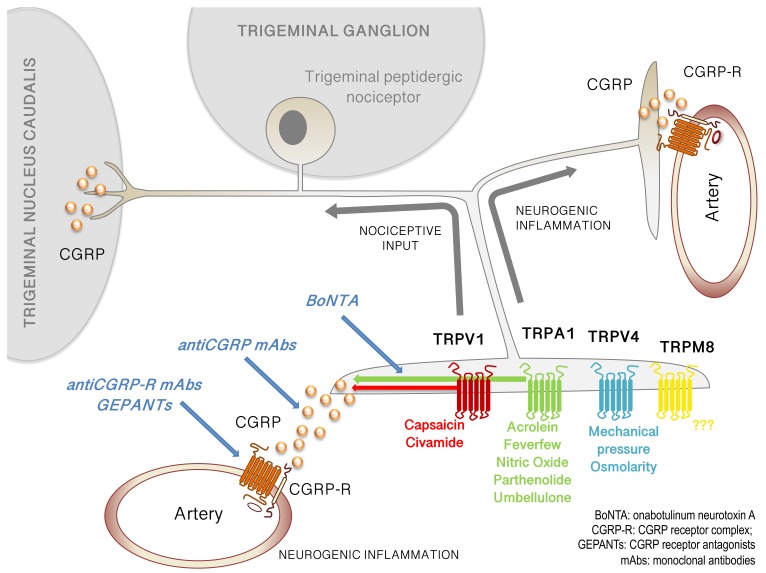Figure 1.
TRP channels on trigeminal afferents and their potential role in migraine pathology. Multiple TRP channels are expressed on trigeminal sensory neurons innervating the meninges including TRPV1, TRPA1, TRPV4, and TRPM8. These channels respond to stimuli implicated in migraine, both from a pathology perspective (e.g. acrolein on TRPA1) and a therapeutic perspective (e.g. parthenolide on TRPA1). Additional modulators are listed below their respective TRP channels. Activation of TRP channels on meningeal afferents leads to action potential signaling into the trigeminal nucleus caudalis (left) and ultimately to headache. Activation of TRP channels on these neurons also leads to the release of neuropeptides such as CGRP, activating CGRP receptors on blood vessels (right and bottom), causing vasodilation and contributing to neurogenic inflammation. Although not shown, TRP channels are also expressed on the central terminals of meningeal afferents, and CGRP is released as a transmitter in this synapse, both of which may also contribute to signaling within this circuit. Multiple migraine therapeutics may act in this circuit, including: BoNTA, which may indirectly contribute to decreased CGRP release and possibly inhibit recruitment of TRP channels to the membrane; GEPANTs, which block the CGRP receptor; antiCGRP mAbs, which sequester extracellular CGRP; and antiCGRP-R mAbs, which bind to and block the CGRP receptor. Abbreviations are found in the lower right corner.

